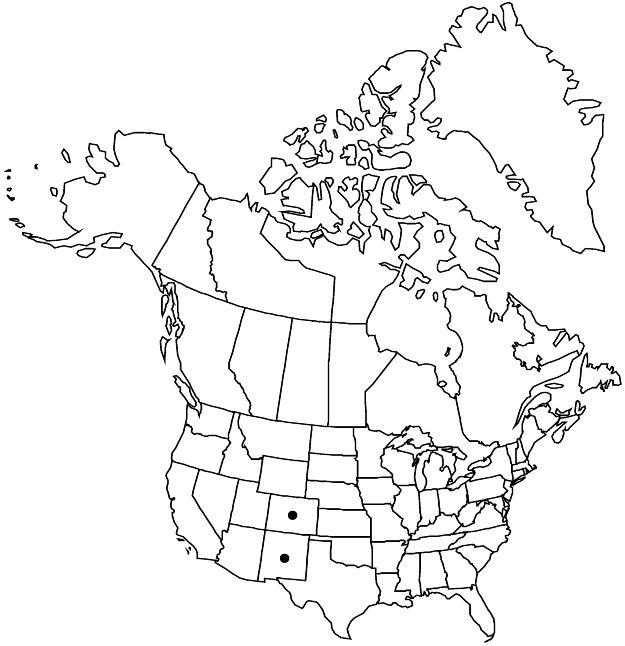Mentzelia laciniata
Ann. Missouri Bot. Gard. 21: 173. 1934.
Plants biennial, bushlike or candelabra-form. Stems solitary, erect, straight; branches distal or along entire stem, distal or proximal longest, antrorse, straight; hairy. Leaves: blade 52–112 × (5.4–)8.3–25 mm, widest intersinus distance 1.4–4 mm; proximal oblanceolate or elliptic, margins pinnatisect, lobes 8–20, slightly antrorse, 4.2–7.4(–10.7) mm; distal oblanceolate, elliptic, or lanceolate, base not clasping, margins usually pinnatisect, sometimes pinnate, especially near apex, lobes 8–18, slightly antrorse, 3–10.8 mm; abaxial surface with simple grappling-hook, complex grappling-hook, and needlelike trichomes, adaxial surface with needlelike trichomes. Bracts: margins usually entire, rarely pinnate. Flowers: petals golden yellow, 14–23.8(–26) × 3.8–7.4 mm, apex acute to rounded, glabrous abaxially; stamens golden yellow, 5 outermost petaloid, filaments narrowly spatulate to elliptic, slightly clawed, 12–20.4 × 2.5–4.9 mm, usually without, rarely with, anthers, second whorl with anthers; anthers straight after dehiscence, epidermis smooth; styles 9.2–17.7 mm. Capsules cylindric, 12–20.2 × 4.5–8.1 mm, base tapering, not longitudinally ridged. Seeds: coat anticlinal cell walls sinuous, papillae 5–14 per cell. 2n = 20.
Phenology: Flowering Jun–Sep.
Habitat: Dry hillsides, roadcuts, roadsides, sandy or clayey soils.
Elevation: 1400–2300 m.
Discussion
Mentzelia laciniata is found in southwestern Colorado and northwestern New Mexico, where it does not extend as far west as the Chuska Mountains.
Selected References
None.
